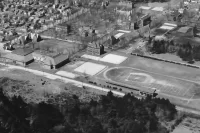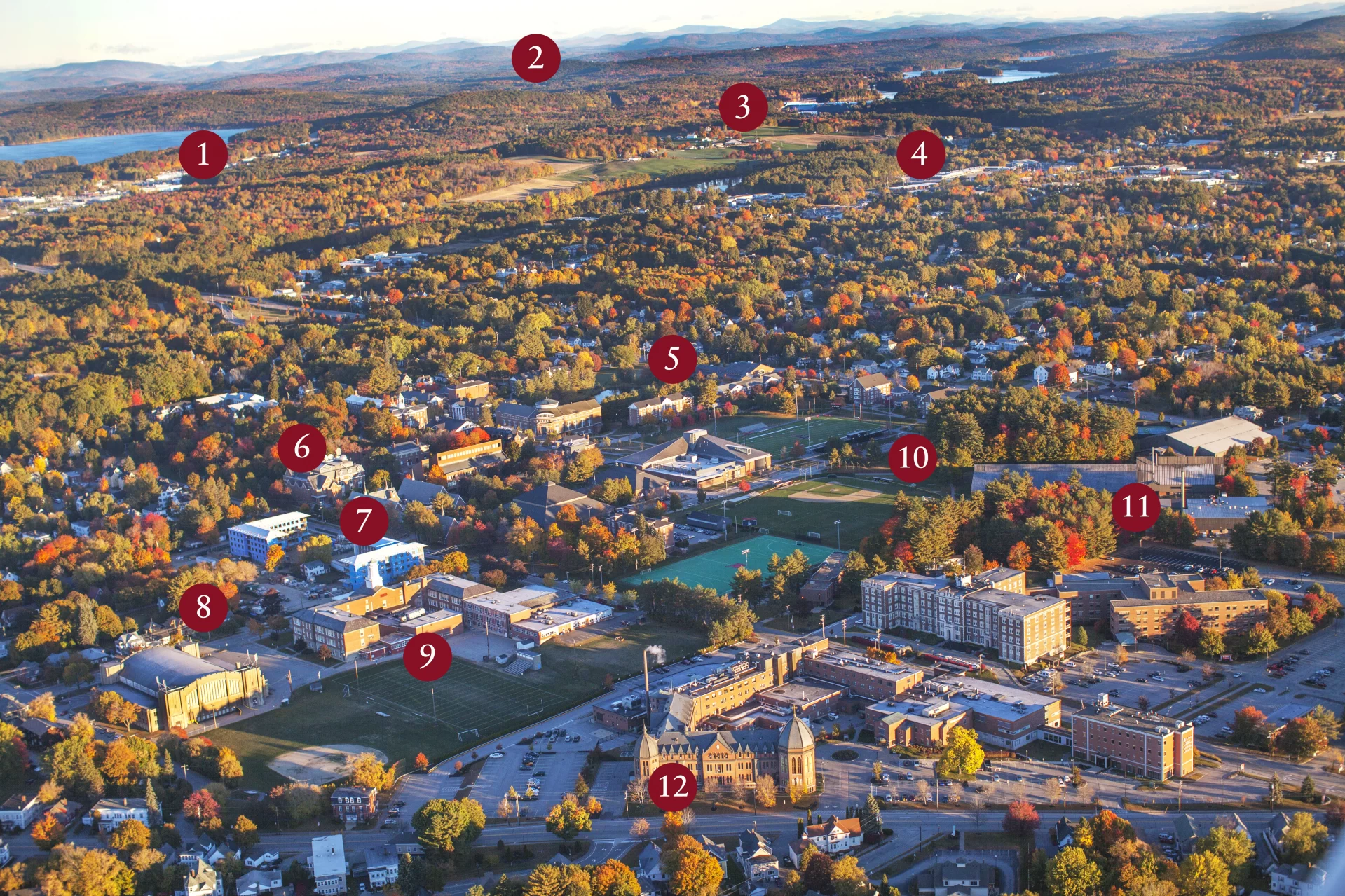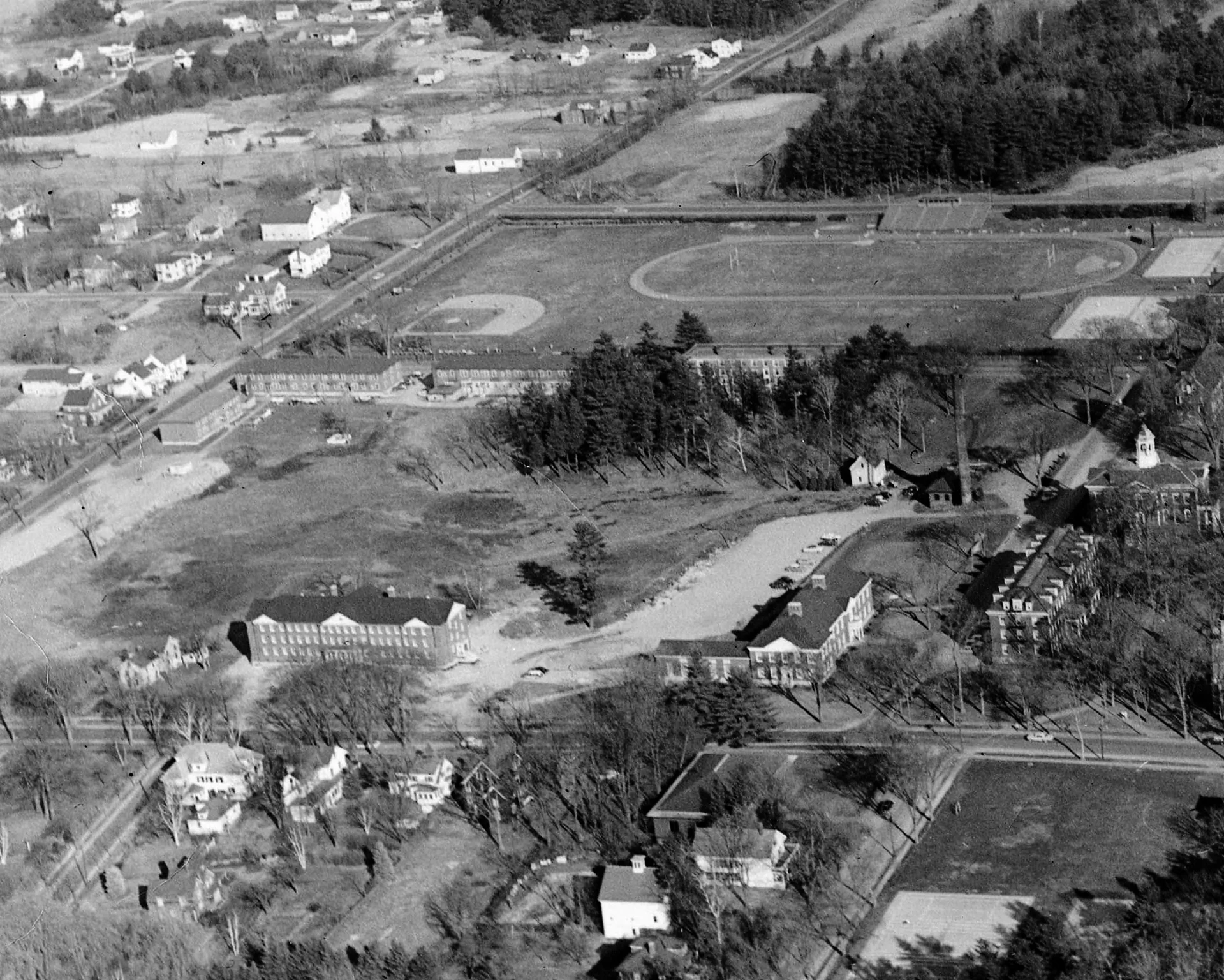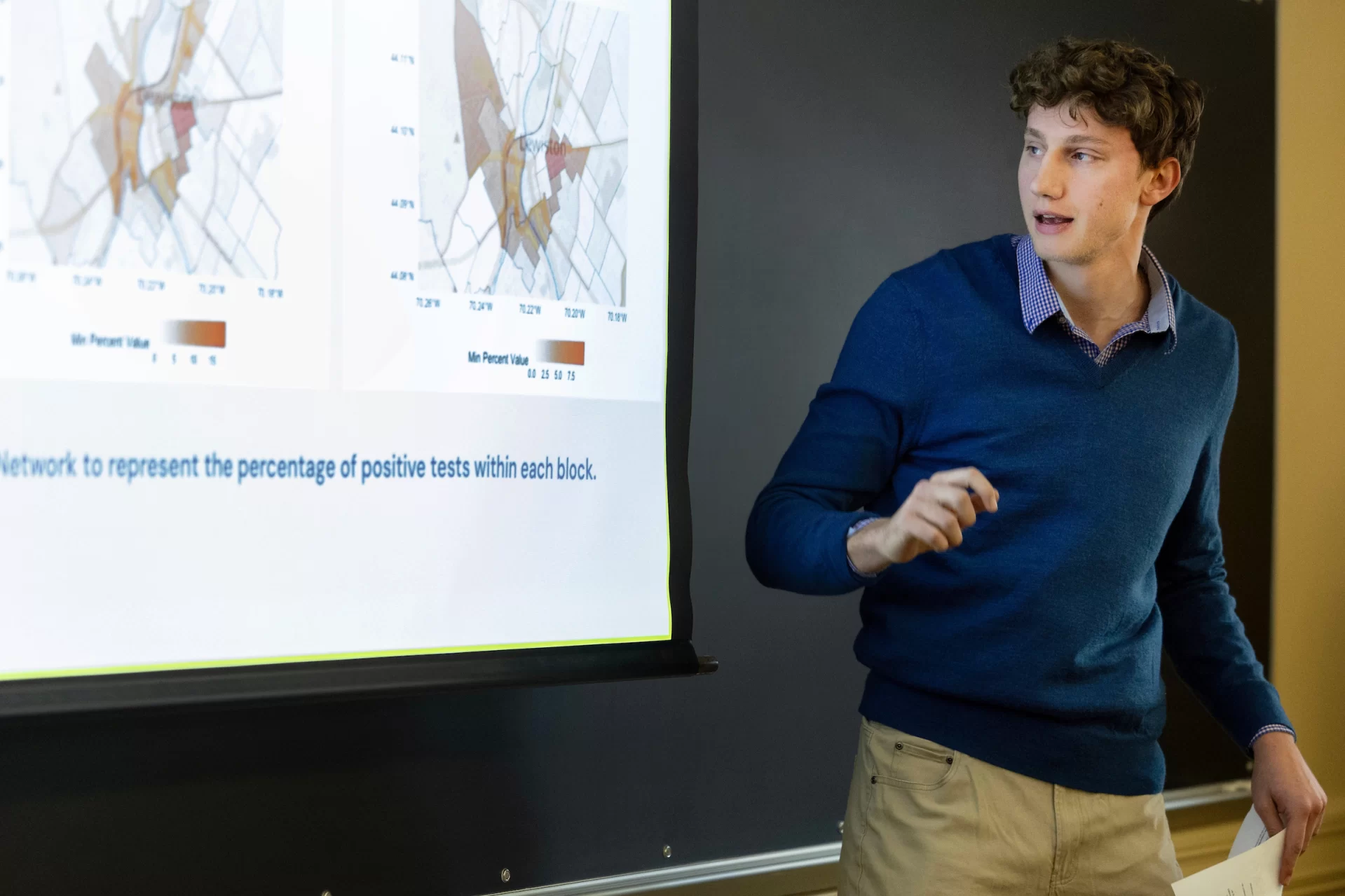
Looking northward from the Bates campus, this photograph was taken from a plane six years ago this week, on Oct. 18, 2015.
Below, we enumerate and share some facts about 12 features of this area, from Lake Auburn to the Cutten smokestack. If you see others you’d like to know more about, feel free to ask.

1. Lake Auburn
Lake Auburn is the source of drinking water for Lewiston and Auburn. It’s one of only eight surface municipal water sources in Maine, out of more than 75, to have an EPA filtration waiver, which allows it to treat the water with ultraviolet light and other means without having to pay to filter it.
For years, Bates scientists have helped the water district monitor lake conditions.
2. The Appalachians
The Appalachian Mountains still have “impressive topography after 400 million years of erosion,” says Dyk Eusden ’80, who retires this year as Whitehouse Professor of Earth and Climate Sciences. Peaks seen here include Mount Blue, Bald Mountain, and Speckled Mountain.
3. Deer Rips dam
The Deer Rips hydroelectric dam was constructed between April 1902 and November 1904. Extensive blasting through ledge was required to creating the canal that’s part of the dam.
A state report in 1905 noted that canal construction included “the greatest dynamite blast ever fired in the state.” Three hundred and fifty drilled holes, each 16 feet in depth, “were charged with 3,000 pounds of dynamite and fired simultaneously with an electric battery.”
The blast broke up 200 feet of ledge along the line of the canal, “releasing a mass of stone, the removal of which required the work of 40 men for nearly three months.”
4. David Rancourt River Preserve
The 14-acre David Rancourt River Preserve is owned by the Androscoggin Land Trust. The property comprises a one-mile loop walking trail, a hand-carry boat launch, two sand beaches, and a scenic overlook.
The property is named for the late David Rancourt, an Androscoggin County deputy sheriff who died while diving in the Androscoggin River in search of evidence in a criminal case.
5. Olin Arts, Museum, Adams
Now occupied by the Olin Arts Center, the Bates Museum of Art, and Adams Hall, this corner of campus was the site of “Sampsonville”: three somewhat ramshackle apartment buildings — former military barracks, in fact — where married Bates students, most of them veterans, lived following World War II.

6. Carnegie Science Hall greenhouse
Carnegie’s rooftop greenhouse grows seedlings for the Plot, the student-run Bates vegetable garden.
7. Chu and Kalperis halls
When this photo was taken, in 2015, Chu and Kalperis halls were under construction, their blue weatherproof film not yet covered by locally fired bricks from Morin Brick Co. of Auburn.
8. Lewiston Memorial Armory
Home of Lewiston’s recreation department, the Lewiston Memorial Armory is the voting location for Bates students who are registered to vote in Maine.
The armory used to host rock concerts. Jimi Hendrix performed there in 1968, with the Bates rock band, The Hanseatic League, opening.
On Feb. 19, 1975, the Armory hosted Queen; the opening acts were Mahogany Rush and Kansas. Tickets were $5.
The audience at the Queen concert was raucous, reported the Associated Press. “Some spectators at a concert by the rock group Queens [sic] engaged in vandalism, littering, drinking, and harassment of officials.”
Afterward, city officials decided that future concerts would require city approval, effectively ending the armory’s heyday as a rock concert venue.
9. Lewiston Middle School
At Lewiston Middle School, Bates students spend hundreds of hours volunteering each year.
Last spring, Bates students helped the Lewiston students craft a proposal to change the current district-wide policy forbidding hats and hoods inside. The proposed change is before the local school committee.
10. Bobcat Statue
The Bobcat statue was installed on this walkway in 2009.
11. Cutten Maintenance Center smokestack
The college’s maintenance center, heating plant, and massive smokestack used to be located in the center of campus, on Andrews Road. With construction of Pettengill Hall in the 1990s, Bates built Cutten Maintenance Center, including a new heating plant and smokestack, on the campus periphery.
With two of the three boilers that provide steam heat for the central campus already burning a product called Renewable Fuel Oil, the college converted the third unit for a different climate-friendly fuel: vegetable oil recovered from the food-service industry.
Switching to renewable energy sources played a major role in Bates becoming climate neutral in 2019.
12. St. Mary’s first building
The original Gothic-style building (1902) of St. Mary’s Health System is on the National Register of Historic Places. It was designed by William R. Miller and amateur architect Father Paul Charland.




